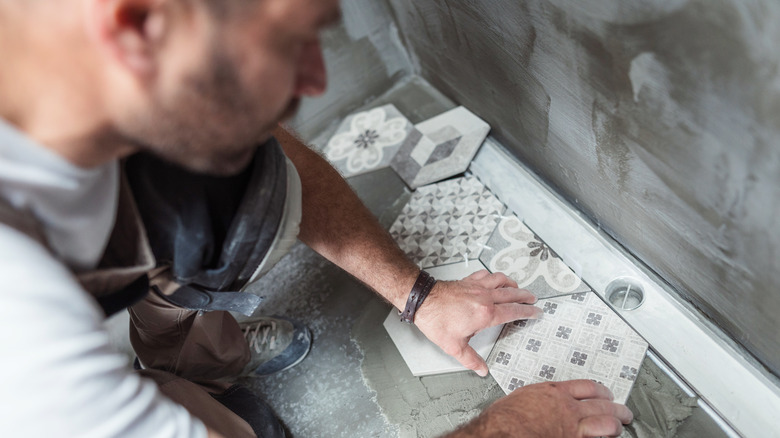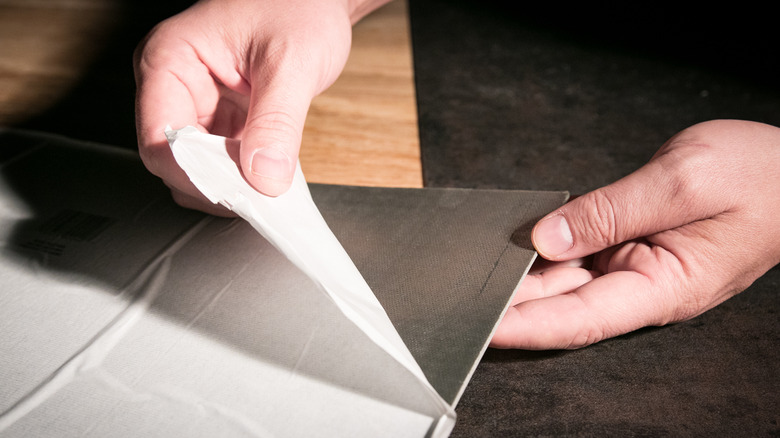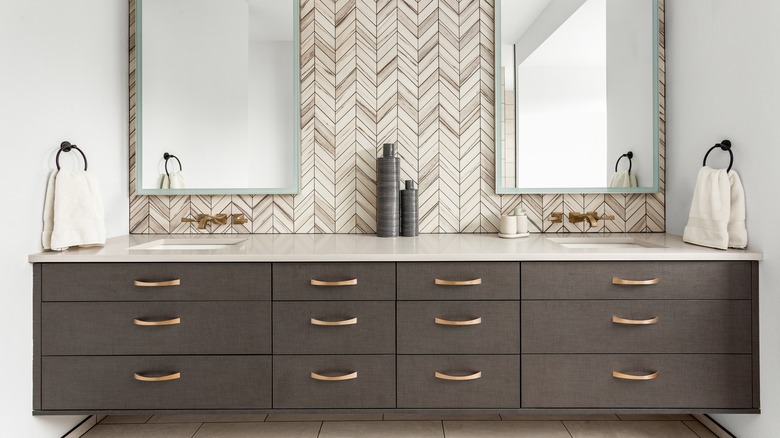Is This Budget-Friendly Bathroom Makeover Worth The Budget-Friendly Cost? Our Tile Expert Weighs In
If you're looking to update your bathroom on a tight budget, you've probably heard of peel and stick tiles. Available in many different designs that can emulate everything from gleaming marble to matte stone, peel and stick tile can be easily installed by you in most cases, saving you money in that area. However, you may be unsure if it's a good long-term option, which is where advice from our tile expert comes in. Schannon Yodice, founder of That Tile Chick, exclusively shared with House Digest her thoughts on the budget tiling option. "Peel & Stick Tile can be a great way to give your space a new look whether it be a kitchen backsplash, bathroom backsplash or accent wall tile," Yodice revealed.
"While it is not quite the same as installing ceramic or porcelain tile, this option can be a great way to temporarily change the look of a space while keeping the cost down [when] compared to a traditional tile installation," she continued. "One thing to remember is that, if this is a temporary solution, removal of the peel and stick tile will be inevitable and will more than likely damage the substrate (like drywall) that you applied it to during removal. [Because of this], be prepared to have to do a little bit of work when you do go to remove that peel and stick tile."
This type of tile is ideal if you want a chic look on a budget
The fact peel and stick tile can cause damage when removed means it isn't suitable if you rent a place with strict guidelines on what can and can't be changed. Even if this isn't an issue for you, Schannon Yodice told House Digest that there are some things you should be aware of. "When purchasing a peel and stick tile, you are going to want to keep an eye out for the manufacturer's recommendations of locations the tile can and cannot be installed," Yodice shared.
"Some peel and stick tiles are not rated for a high heat area like behind a stove or a high moisture area like in a bathroom where there is steam (never install peel and stick tile inside of a shower as the adhesive will dissolve and the tiles will fall off of the substrate)," the tile expert advised. Though Yodice doesn't recommend using peel and stick tiles inside of a shower, this doesn't mean it isn't fair game for your floor or a backsplash where your bathroom sink is. These areas are less likely to be affected by steam, though you should always open a window or use a fan while showering to prevent moisture from building up.
Check these things before starting the installation process
Now you know how peel and stick tiles work, Schannon Yodice shared some tips with House Digest readers on how to make the tile choice work for you. "As with most DIY projects in the construction world, proper preparation prevents poor performance and this will still hold true with peel and stick tile," Yodice revealed. Yodice also shared that there are certain things you should take a look at before beginning such as loose paint on your walls or any dirt or debris on your floor. Both of these things are minor fixes that could impact how well the tiles stick to the wall or floor.
"Finally, you are going to want to make sure your substrate is flat to prevent tile lippage (one tile sticking up higher or lower than the other). You can check for flatness by placing a level or straight edge of your substrate and checking for high or low spots," Yodice added. "You can scrape down high spots or fill in low spots as needed prior to installing your peel and stick tile." With Yodice's advice, your peel and stick tiles will look better than ever, no matter which design you go for — just check that changes are okay before installing the style in a rented property.


